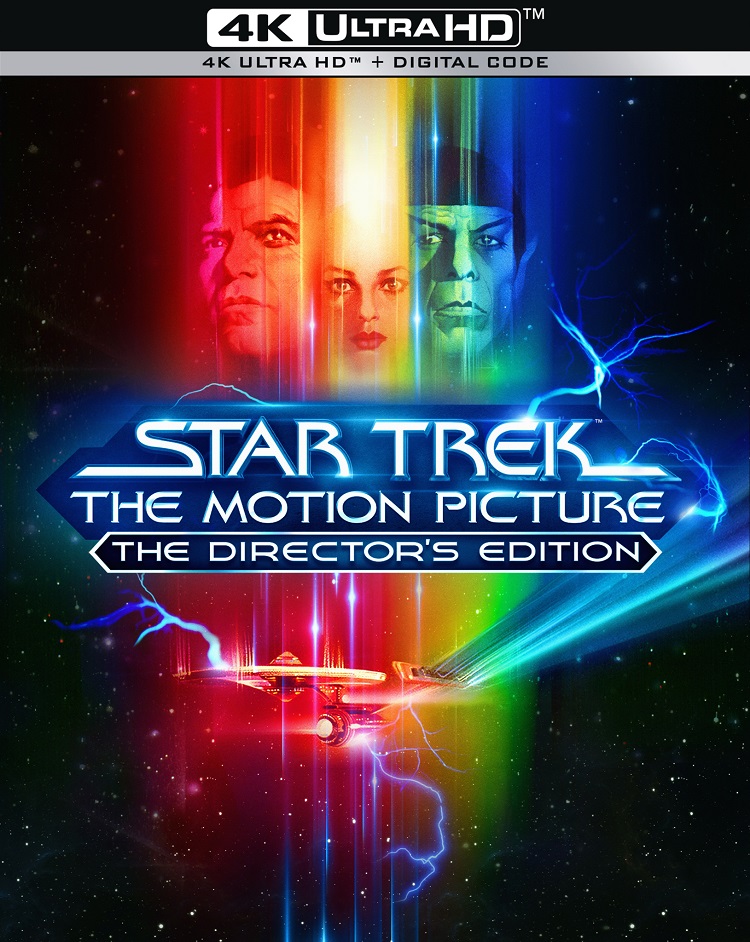
Upon its release in 1979, Trekkies greeted Star Trek: The Motion Picture as an Event. Green-lit by Paramount in a sprint to cash in on the Star Wars craze for all things sci-fi, the movie came in at a $44 million budget and opened to bad press. In the years since, its rep as a snooze-fest has only grown. Is the movie a dud?
Somewhere in the middle lies the truth. Somewhere, Spock is smiling.
The premise: Admiral James T. Kirk (William Shatner) reunites with the original crew of the Starship Enterprise to stop a strange, gargantuan cloud of “unbelievable destructive power” from colliding with Earth. Already, the cloud has destroyed three Klingon cruisers. What’s inside it? An alien spacecraft. And as the Enterprise penetrates the heart of the ship, it finds… Cerebral, thought-provoking stuff—V’ger, a living, thinking machine in search of its creator.
Yep—very hooky.
Here’s the thing, though. I find the movie’s philosophical bent somewhat refreshing. If you’re used to fast-paced space operas of wall-to-wall action, you might enjoy Star Trek: The Motion Picture’s cool, questioning tone. You might savor the way it treats us to the twinkling, measured calm of interstellar flight.
But the movie strains to impress—with the weight of its inquiry into the mysteries of the universe (and our lame effort as humans to understand it), with the awesomeness of the special FX. And (thanks to Douglas Trumbull and John Dykstra, giants of the craft), the FX are neat. (Cheesy-neat; but what was then state-of-the-art keeps an odd, tactile charm.) Underlining the ponderousness of it all is a gorgeous score by Jerry Goldsmith.
Could we hurl the same criticism at Stanley Kubrick’s 2001: A Space Odyssey, a much better film, and one to which Star Trek: The Motion Picture owes a debt? Perhaps. Both films are heavy-handed.
But Kubrick crafted an arresting sensory experience. One that (mostly) eschewed dialogue to tell an elliptical story of man’s restless search for meaning (and wonder) against the blankness of time and space. Star Trek: The Motion Picture has cool visuals (see an elongated scene where Scotty [James Doohan] takes Kirk to a refurbished Enterprise, a doozy of miniature model work shot with pornographic awe); but boy does the movie get talky.
And talky can be fine. This movie, though, drifts at a glacial pace. To buoy us, director Robert Wise should have focused more on what made the original series such a cultural phenomenon. That is, the geeky, good-natured chemistry among its motley crew of characters—the fun interplay that anchored the show’s forays into science and pulp, turning it from a cult property into a popular media franchise. In traces, that dynamic is here. But the film doesn’t invest in it. The film takes forever to go where it wants to go. It drains the life from the relationships on-screen; it keeps them small.
So, at 132 minutes (in the theatrical cut) or 136 (the length of the current one, the Director’s Edition), the movie drags.
But I won’t eviscerate it (even if you think I have!). Star Trek: The Motion Picture presents us with ideas—at least the kind that doesn’t just equate to yet another bald stab at Joseph Campbell’s The Hero with a Thousand Faces. Dated though they are, the FX are nifty (my bias toward the pre-CGI strain remains resolute).* And as much as I prefer the follow-up, Star Trek II: The Wrath of Khan, Star Trek: The Motion Picture doesn’t have to hang its head in shame. Sedate and bland, it’s still a well-crafted piece of entertainment.
A few notes on the Director’s Edition: For years, I shied away from seeing Star Trek: The Motion Picture. Reruns of the original series formed a huge part of my TV diet as a kid, but a Trekkie I was not—and the movie had a bad rap. The new 4K UHD set retools the 2001 director’s cut, the only version I’ve seen. In 1979, Paramount rushed an unfinished cut into theaters, in time for Christmas. Thus, the 2001 edition was a chance to right a wrong. Consulting Wise, Paramount finished the FX he and his crew had had to abort. The restoration team also remixed the sound design and re-cut the picture to enhance the human interplay. I don’t know if this amounts to an enormous improvement. I doubt it’s enough to convert the uninitiated. But that’s ok. If nothing else, Star Trek: The Motion Picture pleased (and should please) many fans of the show. That’s its purpose.
Bonus features on the 4K UHD release include new audio commentary by the team that restored the Director’s Edition—David C. Fein, Mike Matessino, and Daren R. Dochterman. Additionally, you get audio commentary by Wise, Trumbull, Dykstra, Goldsmith, and Stephen Collins, plus text commentary by Michael and Denise Okuda. This release also has a Blu-ray disc with more features: a new, eight-part documentary that details the history of the Director’s Edition; a bevy of effects tests, deleted scenes, costume tests, and computer display graphics; and legacy bonus content, including the movie’s teaser and theatrical trailers. Orson Welles narrates the teaser—and this short film is more engaging, more stylish, than the actual movie. Like, wow.
*The restoration team used computer-generated FX to complete the work Wise and co. aborted. To me, the newer FX look worse. They don’t mix well with the older tricks. They take me from the film.